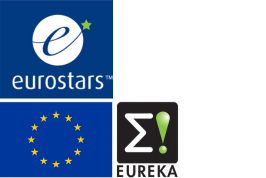
Context
The traditional approach to collecting travel demand information, mainly based on surveys (household travel surveys, vehicle intercept surveys, on-board transit surveys, etc.), provides rich information, but also suffers from major shortcomings. The analysis of geolocation data from personal devices, such as mobile network data, allows overcoming many of these limitations:
- Passive data collection avoids the intrinsic limitations of surveys, such as incorrect and imprecise answers, dependence on users’ availability, and willingness to respond.
- Surveys usually don’t provide information about special events with a significant influence on mobility (holiday seasons, meteorological events, etc.).
- The cost of surveys limits the sample size and update frequency, often resulting in transport projects being planned based on incomplete or outdated information. In contrast, new data sources such as mobile network data drastically reduce the costs and time required to obtain travel demand information, providing large sample sizes and information continuously available over time.
In some projects, surveys and new data collection methods are being combined to leverage the strengths of each source and compensate for their flaws. However, in most cases, information from mobile network data and other passively collected data is used with traditional transport models originally designed to work with the limited data provided by surveys, which prevents realising the full potential of these new big data sources. The integrated package developed by the research project BAMBOO went beyond the state-of-the-art by delivering complete and accurate travel demand information, along with enhanced transport simulation software and visualisation tools specifically designed to extract the full value from such information.
The BAMBOO project
BAMBOO was a collaborative project carried out by two Spanish companies, Nommon and Aimsun, and a British company, Ito World. Its purpose was to develop new methodologies and algorithms to extract travel demand information from mobile network data and integrate it with state-of-the-art transport simulation software and interactive visualisation tools.
Goals
The BAMBOO project had the following specific objectives:
- The development of new algorithms for extracting highly detailed travel demand information from mobile network data.
- The development of new simulation and decision support tools capable of providing a more accurate evaluation of policies related to transport planning and traffic management.
- The development of a set of interactive visualisation tools that enable an efficient and user-friendly presentation of travel demand information and simulation results, incorporating analytical functionalities to facilitate the interpretation by end users.
- The validation of the solutions developed through various use cases conducted in collaboration with transport planners and traffic managers.
Nommon’s role
Nommon’s role in BAMBOO was to develop a set of new algorithms and methodologies aimed at generating mobility and travel demand information from anonymised mobile network data. These methodologies involved the fusion of mobile network data with other data sources to obtain more comprehensive and reliable information, ultimately enhancing and expanding Nommon’s Population Insights and Mobility Insights solutions.
The specific objectives of Nommon in the project were:
- The detailed characterisation of travel purposes through the use of machine learning techniques and the fusion of mobile network data with other data sources, such as land use data and points of interest.
- The precise identification of trips’ start and end times, as well as the mode of transport and route used, through the fusion of mobile network data with data on the transport network, transport services, and travel demand (e.g., public transport smart card data).
- The enhancement of passenger profiling methodologies by merging mobile network data with other sources of sociodemographic data.
- THe development of new algorithms for estimating origin-destination matrices for traffic management applications, enabling the forecasting of demand patterns for given traffic conditions by combining historical demand information with real-time data.
Results
The project led to the development and enhancement of three complementary products that can be acquired separately or integrated into a single turnkey solution: travel demand information provided by Nommon’s, Mobility Insights solutions; Aimsun’s transport and traffic simulation tools; and Ito’s visualisation tools.
The R&D activities undertaken in the BAMBOO project yielded a range of new functionalities for Mobility Insights. This solution had already been successfully employed in hundreds of commercial projects, validating the advantages of Nommon’s approach compared to traditional data collection methods. As the project progressed, a series of technological enhancements were identified to further improve the solution’s market potential. These enhancements included more detailed characterisation of travel purposes, improved identification of transport modes and routes, and a more comprehensive sociodemographic profile of the travellers. In the case of Aimsun, the BAMBOO results were integrated as new features of the Aimsun Next software. The Aimsun Next 20 version was launched in May 2020 with new features for disaggregated demand generation and simulation based on the developments carried out in the BAMBOO project. The visualisations developed by Ito World were exploited through the generation of platforms for the real-time provision of transport supply and demand information.

BAMBOO was a research project funded by CDTI under the Eurostars H2020 programme. The Eurostars Programme is powered by EUREKA and the European Community (www.eurekanetwork.org).
